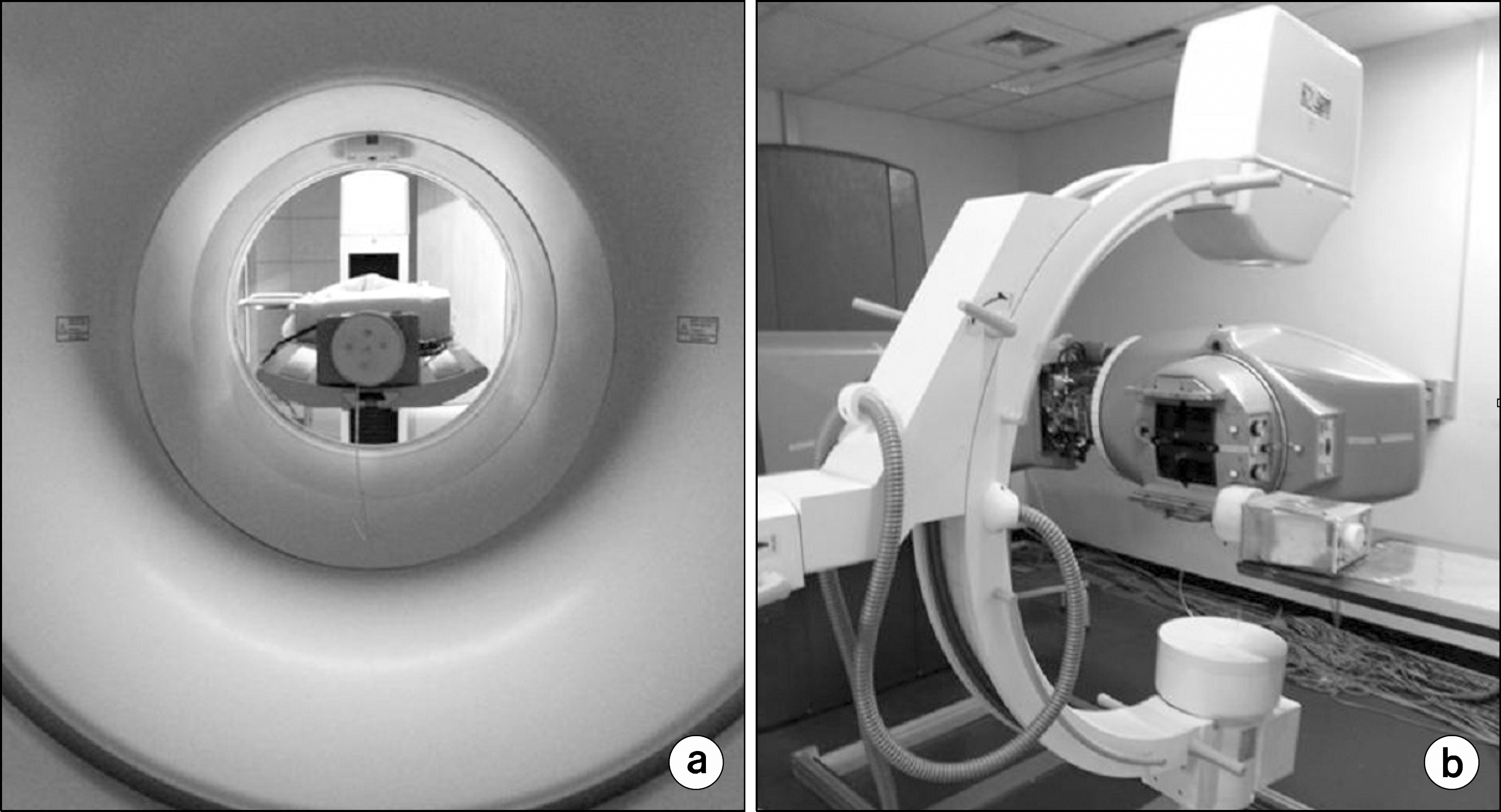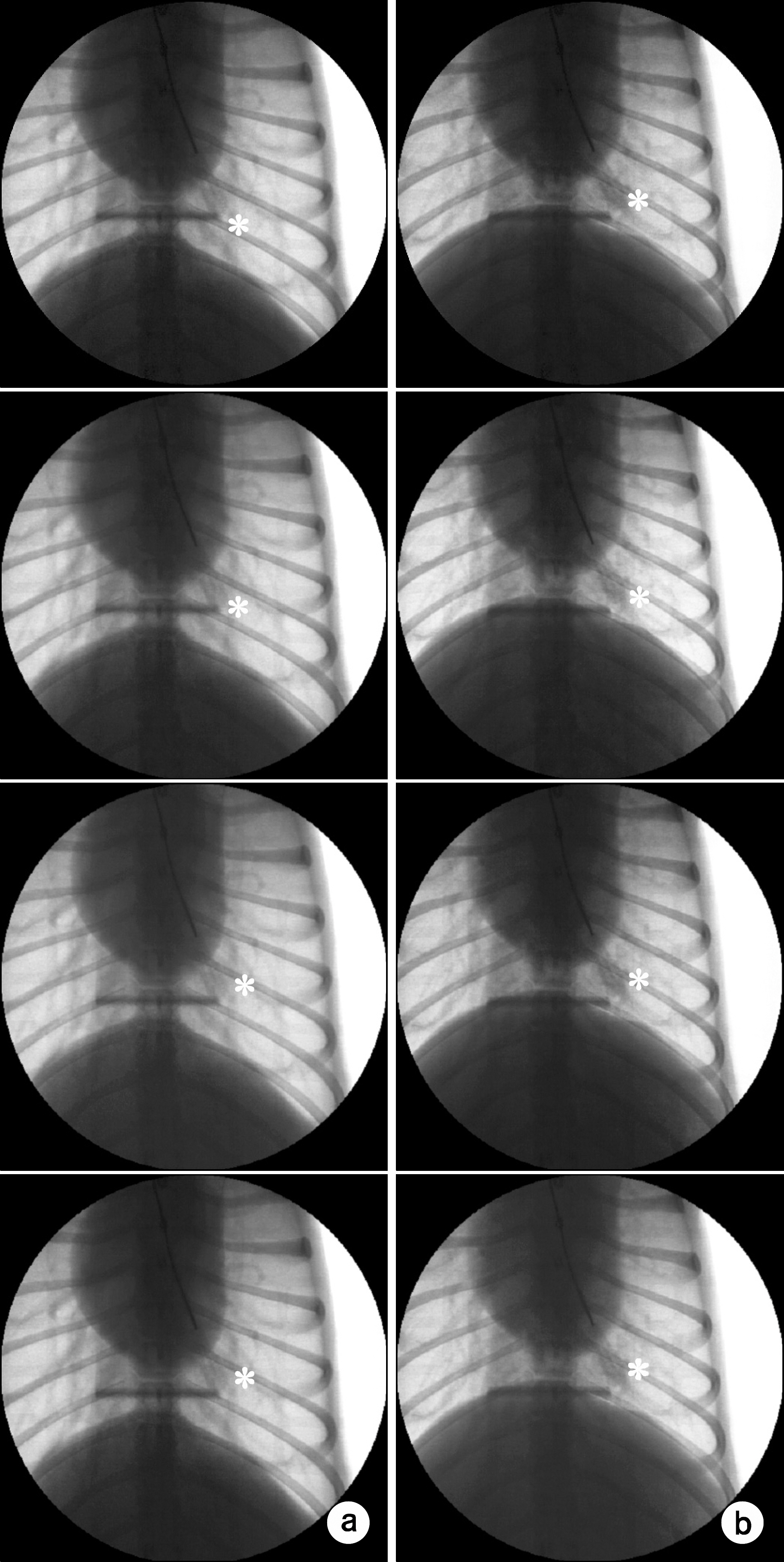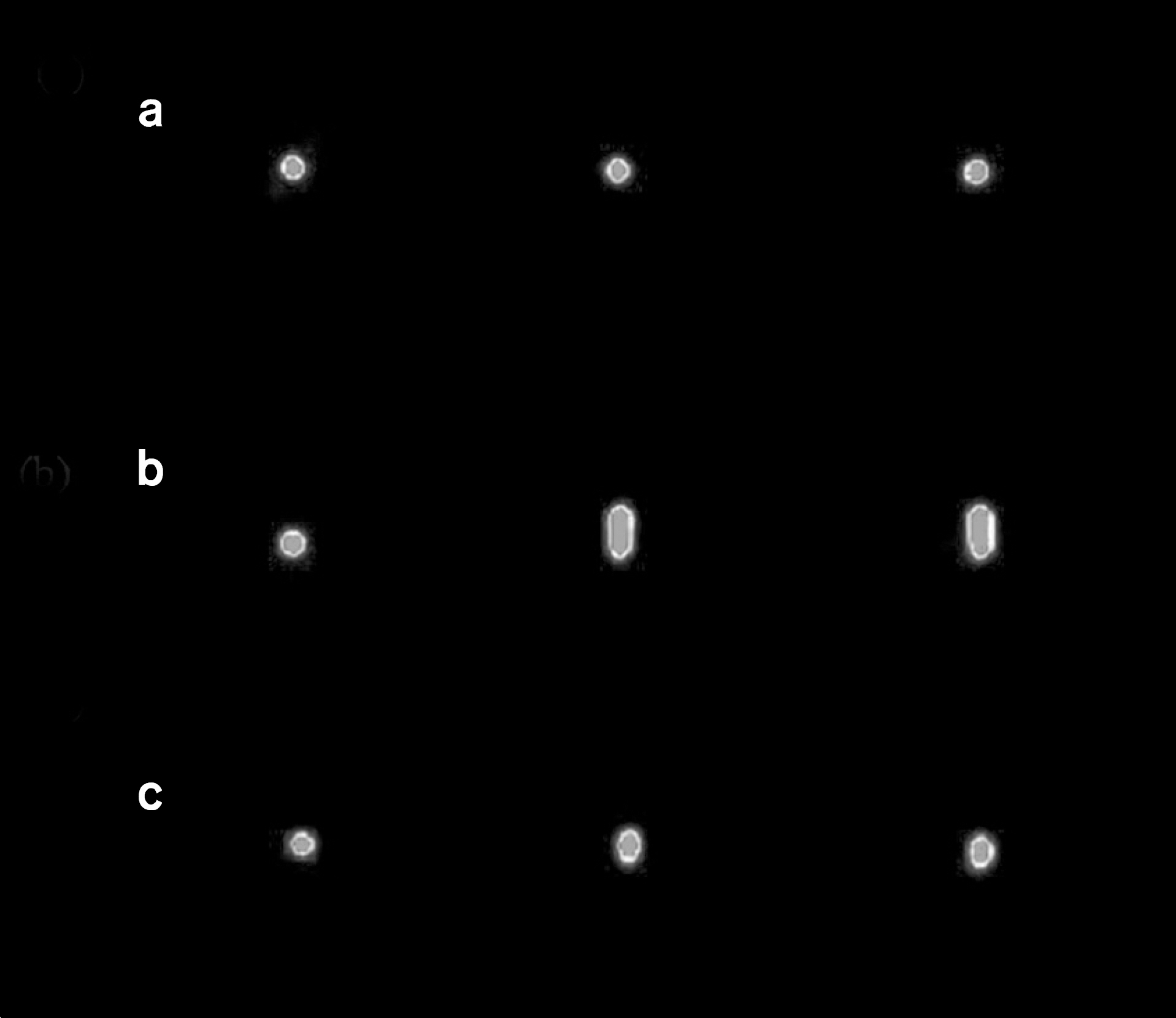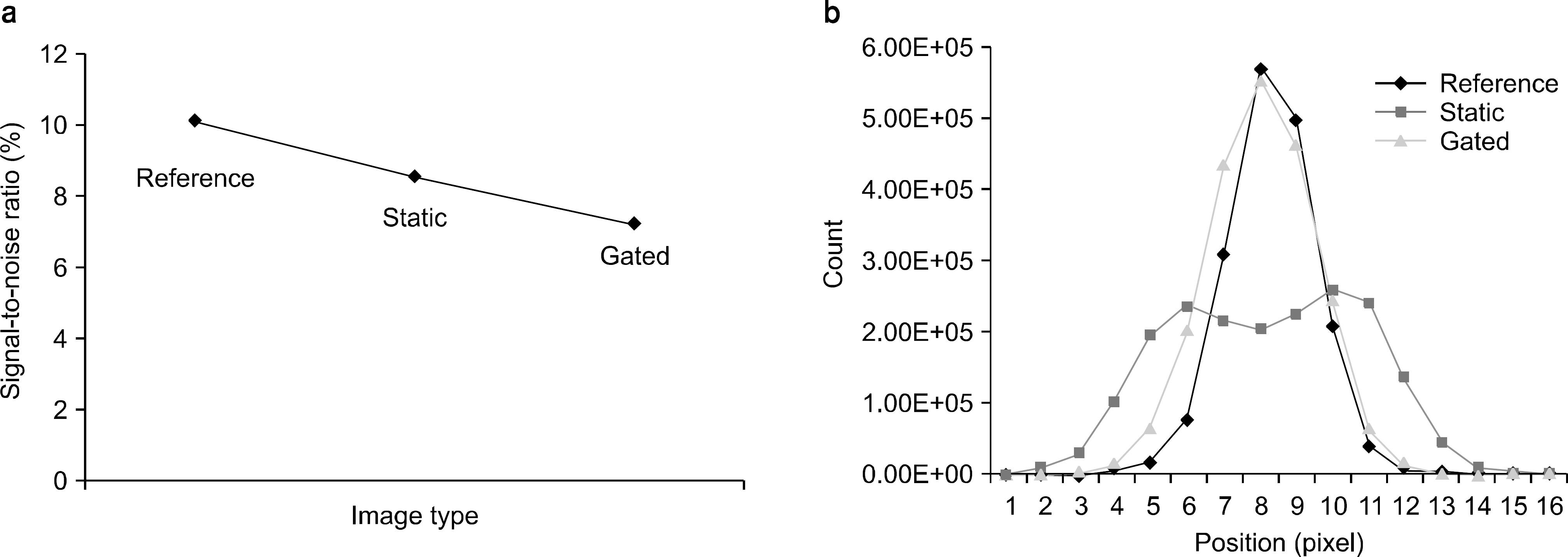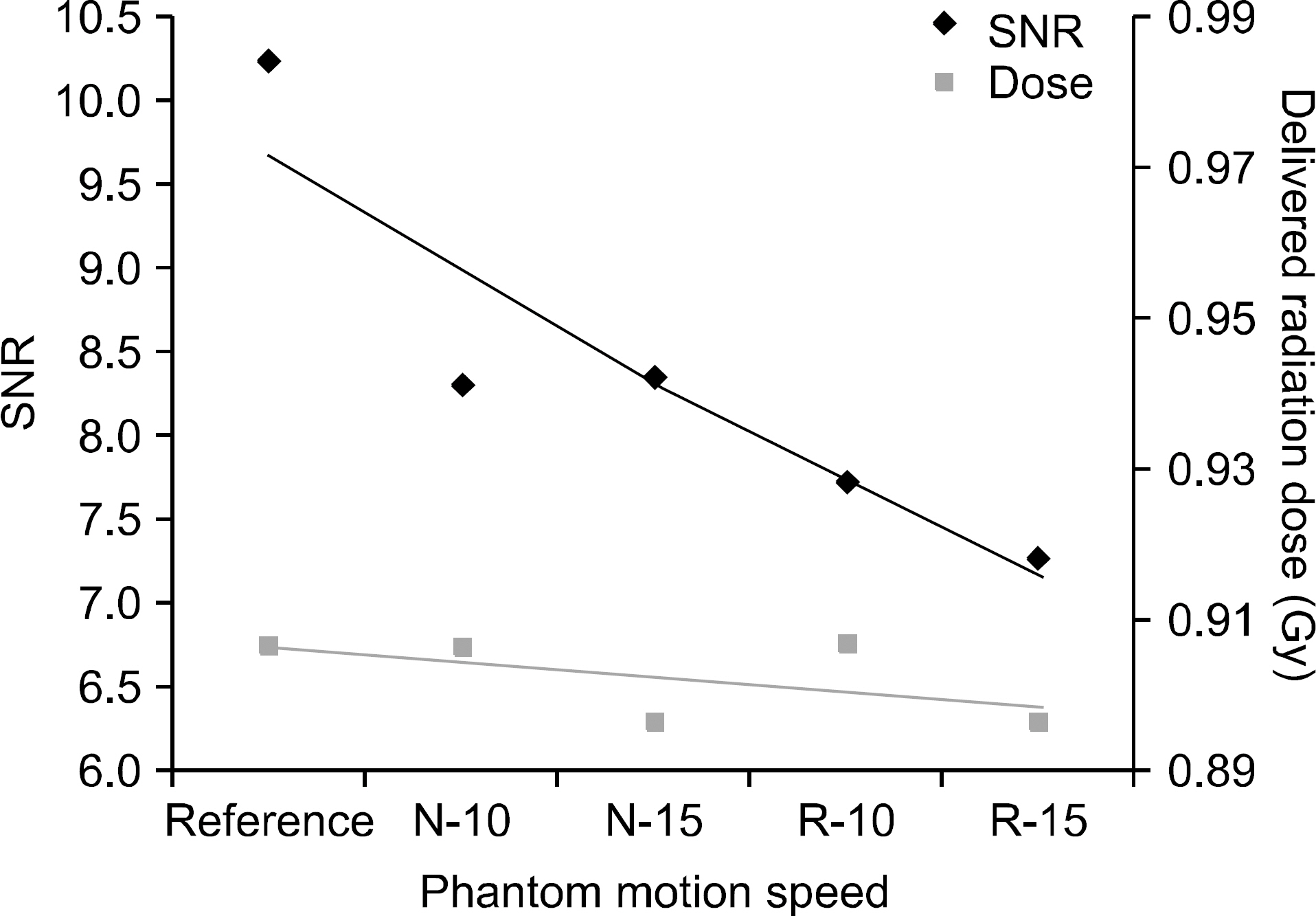Prog Med Phys.
2013 Mar;24(1):76-83.
Development of Artificial Pulmonary Nodule for Evaluation of Motion on Diagnostic Imaging and Radiotherapy
- Affiliations
-
- 1Molecular Imaging Research Center, Korea Institute of Radiological and Medical Sciences, Seoul, Korea.
- 2Division of Radiation Cancer Research, Korea Institute of Radiological and Medical Sciences, Seoul, Korea.
- 3Department of Veterinary Radiology and Diagnostic Imaging, College of Veterinary Medicine, Konkuk University, Seoul, Korea. eomkd@konkuk.ac.kr
Abstract
- Previous studies about effect of respiratory motion on diagnostic imaging and radiation therapy have been performed by monitoring external motions but these can not reflect internal organ motion well. The aim of this study was to develope the artificial pulmonary nodule able to perform non-invasive implantation to dogs in the thorax and to evaluate applicability of the model to respiratory motion studies on PET image acquisition and radiation delivery by phantom studies. Artificial pulmonary nodule was developed on the basis of 8 Fr disposable gastric feeding tube. Four anesthetized dogs underwent implantation of the models via trachea and implanted locations of the models were confirmed by fluoroscopic images. Artificial pulmonary nodule models for PET injected 18F-FDG and mounted on the respiratory motion phantom. PET images of those acquired under static, 10-rpm- and 15-rpm-longitudinal round motion status. Artificial pulmonary nodule models for radiation delivery inserted glass dosemeter and mounted on the respiratory motion phantom. Radiation delivery was performed at 1 Gy under static, 10-rpm- and 15-rpm-longitudinal round motion status. Fluoroscpic images showed that all models implanted in the proximal caudal bronchiole and location of models changed as respiratory cycle. Artificial pulmonary nodule model showed motion artifact as respiratory motion on PET images. SNR of respiratory gated images was 7.21. which was decreased when compared with that of reference images 10.15. However, counts of respiratory images on profiles showed similar pattern with those of reference images when compared with those of static images, and it is assured that reconstruction of images using by respiratory gating improved image quality. Delivery dose to glass dosemeter inserted in the models were same under static and 10-rpm-longitudinal motion status with 0.91 Gy, but dose delivered under 15-rpm-longitudinal motion status was decreased with 0.90 Gy. Mild decrease of delivered radiation dose confirmed by electrometer. The model implanted in the proximal caudal bronchiole with high feasibility and reflected pulmonary internal motion on fluoroscopic images. Motion artifact could show on PET images and respiratory motion resulted in mild blurring during radiation delivery. So, the artificial pulmonary nodule model will be useful tools for study about evaluation of motion on diagnostic imaging and radiation therapy using laboratory animals.
MeSH Terms
Figure
Reference
-
References
1. Phelps ME. Positron emission tomography provides molecular imaging of biological processes. Proc Natl Acad Sci. 97(16):9226–9233. 2000.
Article2. Bryan PJ, Custar S, Haaga JR, Balsara V. Respiratory movement of the pancreas: an ultrasonic study. J Ultrasound Med. 3(7):317–320. 1984.
Article3. Ross CS, Hussey DH, Penington EC, et al. Analysis of movement of intrathoracic neoplasms using ultrafast computed tomography. Int J Radiat Oncol Biol Phys. 18(3):671–677. 1990.4. Davies SC, Hill AL, Holmes RB, Halliwell M, Jackson PC. Ultrasound quantitation of respiratory organ motion in the upper abdomen. Br J Radiol. 67(803):1096–1102. 1994.
Article5. Nehmeh SA, Erdi YE. Respiratory motion in positron emission tomography/computed tomography: Review. Semin Nucl Med. 38:167–176. 2008.6. Chun SY, Reese TG, Ouyang JS, et al. MRI-Based nonrigid motion correction in simultaneous PET/MRI. J Nucl Med. 53(8):1284–1291. 2012.
Article7. Osman MM, Cohade C, Nakamoto Y, Wahl RL. Respiratory motion artifacts on PET emission images obtained using CT attenuation correction on PET-CT. Eur J Med Mol Imaging. 30(4):603–606. 2003.
Article8. Catana C, Benner T, van der Kouwe A, et al. MRI-assisted PET motion correction for neurologic studies in an integrated MR-PET scanner. J Nucl Med. 52(1):154–161. 2011.
Article9. Zhang Q, Pevsner A, Hertanto A, et al. A pateint-specific respiratory model of anatomical motion for radiation treatment planning. Med Phys. 34(12):4772–4781. 2007.10. Caldwell CB, Mah K, Skinner M, Danjoux CE. Can PET provide the 3D extent of tumor motion for individualized internal target volumes? A phantom study of the limitations of CT and the promise of PET. Int J Radiation Oncology Biol Phys. 55(5):1381–1393. 2003.
Article11. Low DA, Parikh PJ, Lu W, et al. Novel breathing motion model for radiotherapy. Int J Radiation Oncology Biol Phys. 63(3):921–929. 2005.
Article12. Yu JW, Woo SK, Lee YJ, et al. Estimation of internal motion for quantitative improvement of lung tumor in small animal. Korean J Med Phys. 22(3):140–147. 2011.13. Ionascu D, Jiang SB, Nishioka S, Hiroki S, Berbeco RI. Internal-external correlation investigations of respiratory induced motion of lungs. Med Phys. 34(10):3893–3903. 2007.14. ASAHI Glass Cor. 2004. Explanation Material of RPL Glass Dosimeter: Small Element System. Tokyo, Japan.15. Eom K, Seoung Y, Park H, Choe N, Park J, Jang K. Radiologic and computed tomographic evaluation experimentally induced lung aspiration sites in dogs. J Vet Sci. 7(4):397–399. 2006.16. Bortfeld T, Jiang SB, Rietzel E. Effects of motion on the total dose distribution. Semin Radiat Oncol. 14(1):41–51. 2004.
Article
- Full Text Links
- Actions
-
Cited
- CITED
-
- Close
- Share
- Similar articles
-
- Studies and Real-World Experience Regarding the Clinical Application of Artificial Intelligence Software for Lung Nodule Detection
- Computer-Aided Differential Diagnosis of the Pulmonary Nodule: Towards an Understanding of the Medical Imaging Basics and Experiences in the Field
- The Latest Trends in the Use of Deep Learning in Radiology Illustrated Through the Stages of Deep Learning Algorithm Development
- Deep Learning in MR Motion Correction:a Brief Review and a New Motion Simulation Tool (view2Dmotion)
- Commentary on An Application of Artificial Intelligence to Diagnostic Imaging of Spine Disease: Estimating Spinal Alignment From Moiré Images


